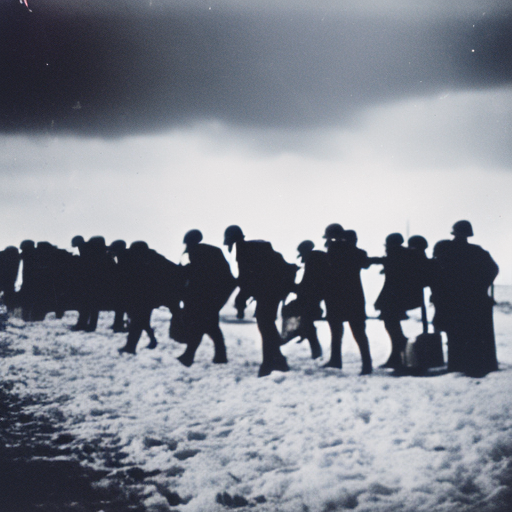Dunkirk Evacuation: A Miraculous Rescue Operation
The Dunkirk evacuation, also known as Operation Dynamo, was a remarkable military operation that took place during World War II. It occurred between May 26 and June 4, 1940, and involved the evacuation of Allied soldiers from the beaches and harbor of Dunkirk, a town located in northern France. The operation was a desperate attempt to save the British and French troops who had been surrounded by German forces during the Battle of Dunkirk.
The Situation at Dunkirk
By late May 1940, German forces had successfully invaded France and pushed the Allied armies, consisting of British, French, and Belgian troops, to the northern coast of France. The German army had effectively cut off the Allied forces from their supply lines and surrounded them in the Dunkirk region. The situation was dire, and the Allies faced the risk of being captured or annihilated.
Operation Dynamo
In response to the crisis, the British launched Operation Dynamo, a plan to evacuate the stranded troops. The operation involved the coordinated effort of the Royal Navy, the Royal Air Force (RAF), and a flotilla of civilian boats. The plan was to rescue as many soldiers as possible by ferrying them across the English Channel to the safety of England.
The Evacuation Process
The evacuation process began on May 26, 1940, with the Royal Navy sending ships to the beaches of Dunkirk to pick up the soldiers. However, the shallow waters prevented larger ships from reaching the shore, forcing them to anchor offshore and rely on smaller vessels to transport the troops from the beaches to the larger ships. This is where the civilian boats, known as the “little ships of Dunkirk,” played a crucial role. Fishing boats, pleasure craft, and other small vessels were mobilized to shuttle soldiers from the beaches to the waiting ships.
The Miracle of Dunkirk
Despite the challenging conditions, the evacuation proceeded remarkably well. The Royal Navy and civilian boats worked tirelessly to rescue the stranded soldiers, often under heavy enemy fire. The RAF also played a vital role in protecting the evacuation operation by engaging German aircraft and providing air cover for the ships and boats.
Success and Legacy
By the end of Operation Dynamo on June 4, 1940, over 338,000 Allied soldiers had been successfully evacuated from Dunkirk. The operation was a significant success, as it saved a large portion of the British Expeditionary Force and other Allied troops. It also boosted morale in Britain and provided a glimmer of hope in the face of the German advance.
The Dunkirk evacuation had several important consequences. Firstly, it allowed the Allies to preserve a substantial number of troops who would later play a crucial role in the defense of Britain and the eventual liberation of Europe. Secondly, it demonstrated the power of a coordinated effort between the military and civilian sectors. The involvement of civilian boats in the rescue operation showcased the resilience and determination of the British people in the face of adversity.
The evacuation also had a profound impact on the perception of the war. While the operation was a success, it highlighted the vulnerability and precarious position of the Allied forces. The events at Dunkirk served as a wake-up call for the British government and led to a reassessment of military strategy and preparedness.
In conclusion, the Dunkirk evacuation was a remarkable military operation that saved hundreds of thousands of Allied soldiers from certain capture or death. The successful coordination between the Royal Navy, the RAF, and civilian boats demonstrated the power of collective action. The operation not only preserved valuable troops but also boosted morale and reshaped the perception of the war. The Dunkirk evacuation remains a symbol of resilience, courage, and the indomitable spirit of the British people during World War II.












